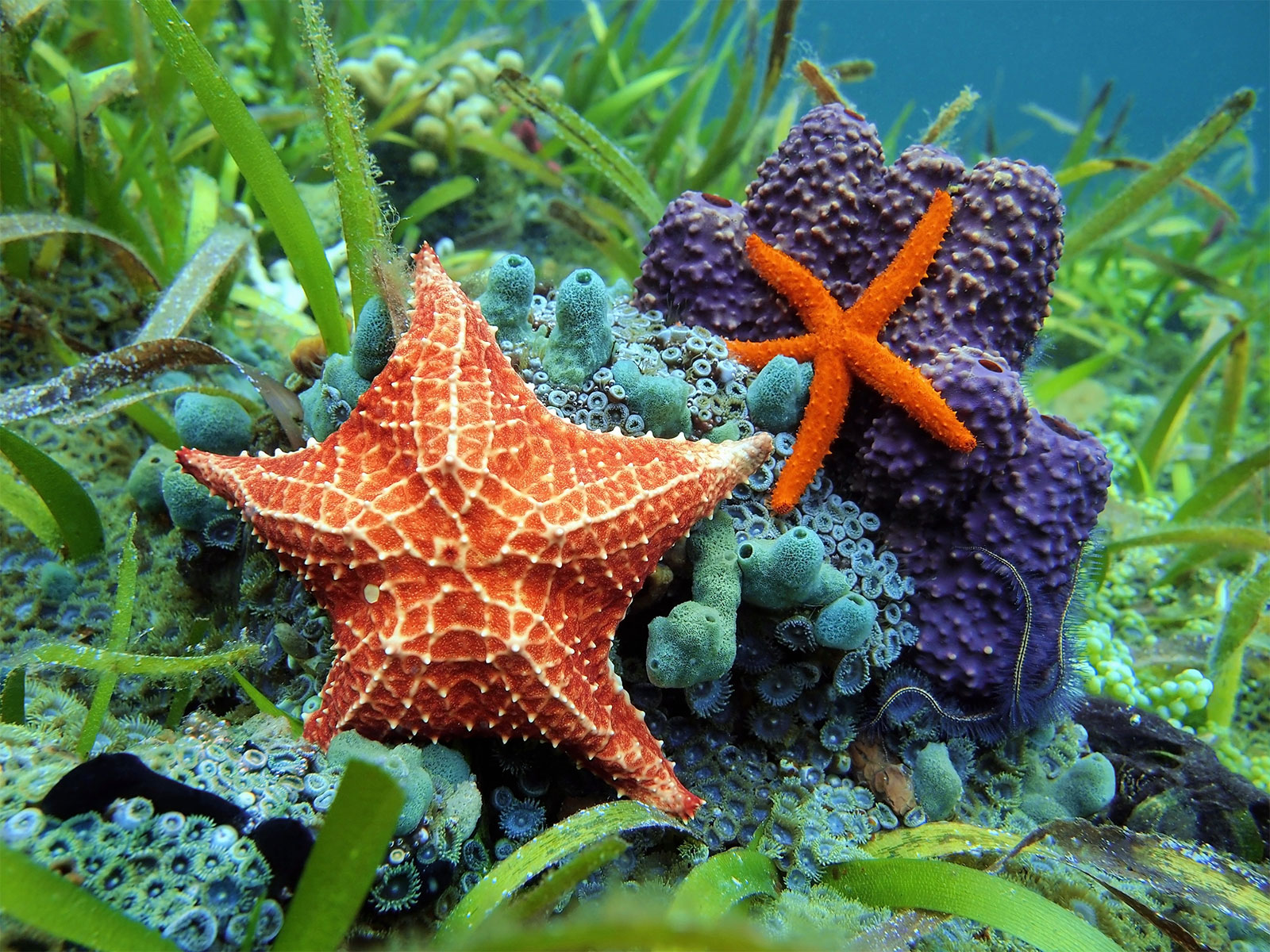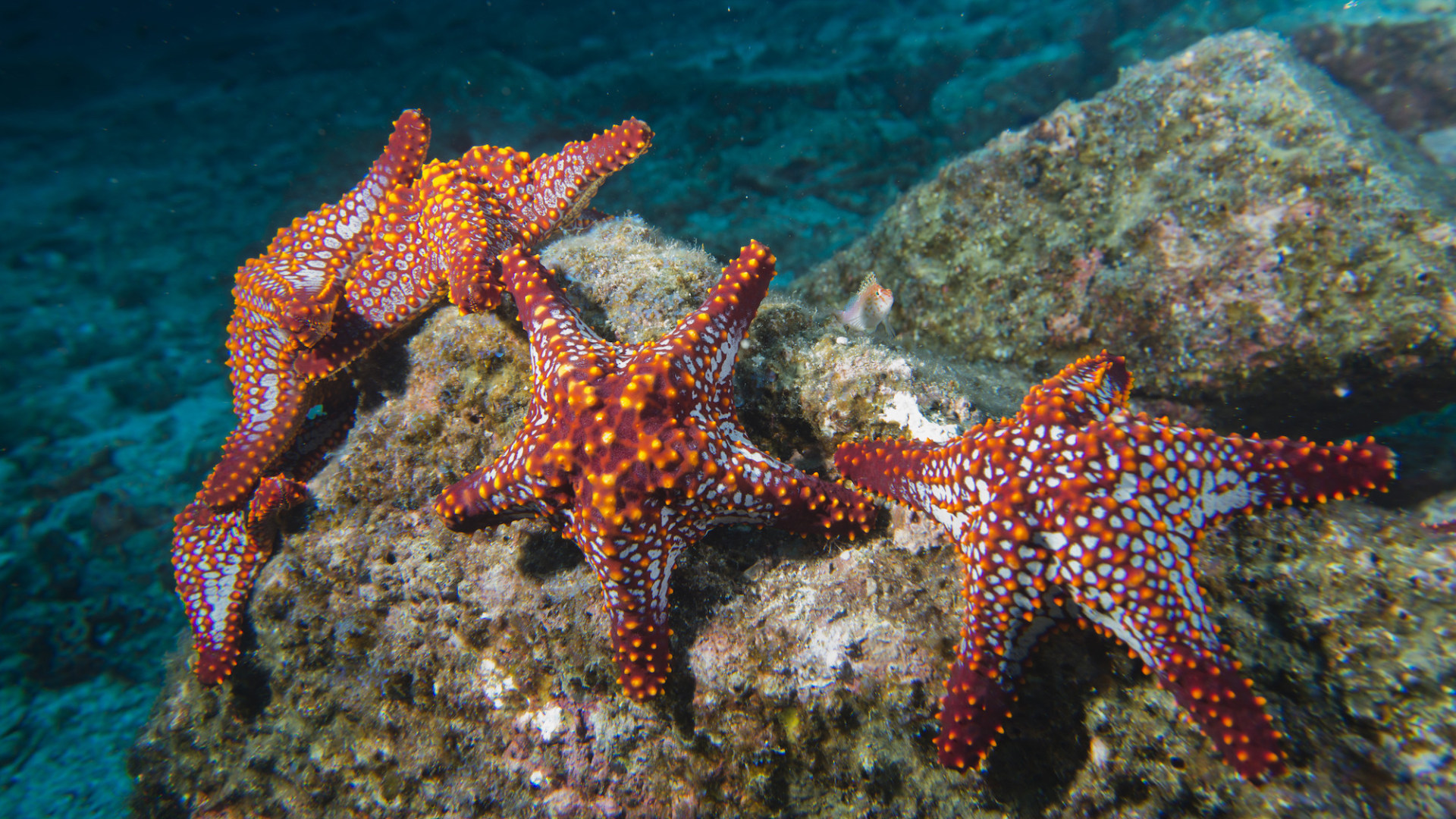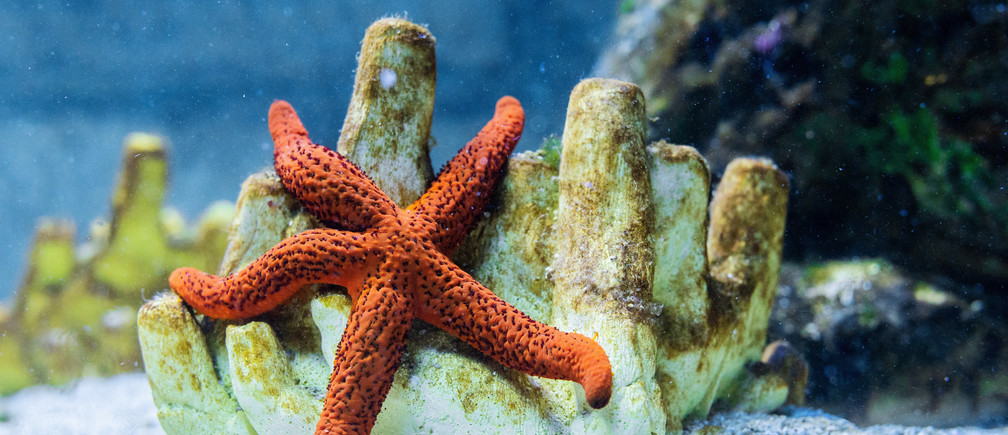





 Starfish species inhabit all of the world's oceans. Habitats range from tropical coral reefs, rocky shores, tidal pools, mud, and sand to kelp forests, seagrass meadows and the deep-sea floor down to at least 6,000 m (20,000 ft). |
 They feed on clams, worms, crustaceans and other small prey that can be found in the substrate |

|
All starfish are in the taxonomic class Asteroidea. The class Asteroidea is named in reference to their star, or asteroid, shape. Despite the name, some starfish can have as many as 50 arms!, Despite their appearance, starfish can actually be quite mobile. Though they move relatively slowly, starfish have a system of tube feet beneath their bodies. These tube feet are used by flowing water into the "tube" and using a suction-cup like foot to grab onto a surface.
These tube feet can also be used to aid in feeding. The starfish will wrap its arms around a mollusk, yank the shell open, and spit its stomach out of its own body. The sea star's stomach wraps around the prey, digests it, and is sucked back into the sea star.
If a starfish loses one of its arms, it can simply grow another! This process is called "regeneration." Some sea stars can even reproduce by breaking off one of their legs or splitting in half. The broken leg will simply grow a new sea star, in a process called "fragmentation."